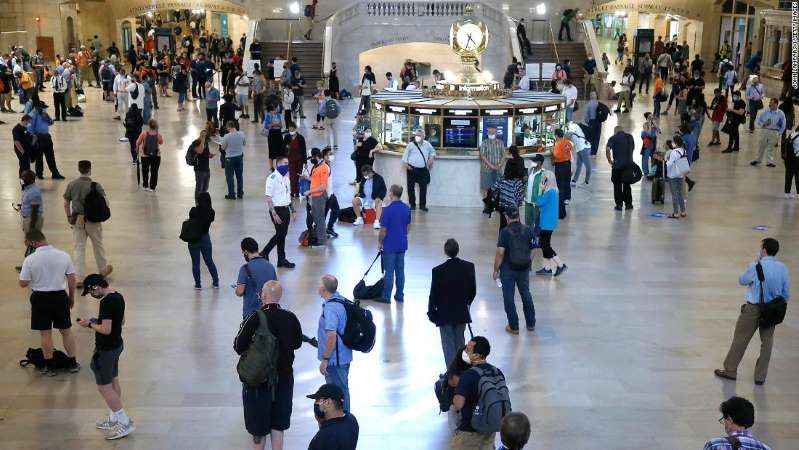By Anneken Tappe, CNN Business–
America’s fragile jobs market recovery, after just two months of improvement, appears to be losing steam as Covid-19 infections rise and federal funds for businesses begin to dry up.
On Friday, the US government is set to release its monthly jobs report, and economists are predicting another 1.6 million jobs were added in July — a sharp slowdown from the 4.8 million added in June. That would bring the monthly unemployment rate to 10.5% in July, from 11.1% in June.
If those predictions hold true, America would still be down some 13 million jobs since February, and the unemployment rate would still be higher than at the peak of the 2007-09 financial crisis.
Although most economists say the pace of the recovery slowed in July, some say it reversed.
Oxford Economics senior US economist Lydia Boussour says she expects Friday’s report to show a loss of 280,000 jobs, rather than a gain. That would signal even more clearly that the foundation of the recovery is cracking.
Wednesday’s ADP employment report, which is the private-sector equivalent of the jobs report and based on a different survey, disappointed expectations — dramatically. The report showed only 167,000 jobs added in July, compared with 1.5 million expected.
Another government jobs survey, from the Census Bureau, indicated a decline in jobs last month.
Meanwhile, President Donald Trump boasted America would see “another big job number on Friday,” during an interview on Fox Wednesday morning. Trump said he had not yet seen the jobs number, for which he gets a preview.
Initial claims for unemployment benefits ticked up around mid-July, putting an end to four months of declines. But Thursday’s report from the Department of Labor showed that the first-time claims for regular unemployment aid decreased again.
“July is so uncertain because some areas, some sectors continued to reopen in the early part of the month, and then things started to change,” said Jeanette Garretty, chief economist at Robertson Stephens Wealth Management.
This was exacerbated by federal money for businesses through the paycheck protection program running out, she added. Democrats and Republicans in Congress are still struggling to forge another stimulus package.
It has been more than three months since the pandemic decimated America’s labor market, bringing about the worst job loss on record and the highest unemployment rate since the Great Depression.
The situation has improved since then, but we’re a long way from back to normal.
Not all sectors are recovering at the same pace. There might be more layoffs in the hospitality industry as some states pause their reopening plans, but other areas of the economy, such as manufacturing and construction, may have added jobs.
Lawmakers are billions of dollars apart
No matter where Friday’s numbers come in, the pressure is on lawmakers in Washington to respond. Politicians will jump on the report to show either the improvements in the jobs market or how many people remain out of work.
Congress is still trying to agree on terms for the next round of stimulus measures. Last week, Democrats and Republicans were literally billions apart in their proposals.
A key point of contention is the $600 weekly federal booster to regular unemployment benefits, which expired last week. House Speaker Nancy Pelosi said earlier this week “if the unemployment goes down, then that number can go down.”
Many Republicans argue that the $600 benefit keeps people from returning to work, while Democrats say that workers are staying home because it’s not yet safe to return to work or because they have to focus on child care.
“There are still far fewer opportunities for people looking for work than before,” Nick Bunker, director of research at Indeed’s Hiring Lab, told CNN Business.
Job postings are still about 18% below where they were at the same time last year, even though the trend has improved since the spring, Bunker said.
Economists believe that may people who have lost their jobs will return to work as the economy recovers, but a lot of positions won’t come back for a very long time, if at all.


Leave A Comment
You must be logged in to post a comment.